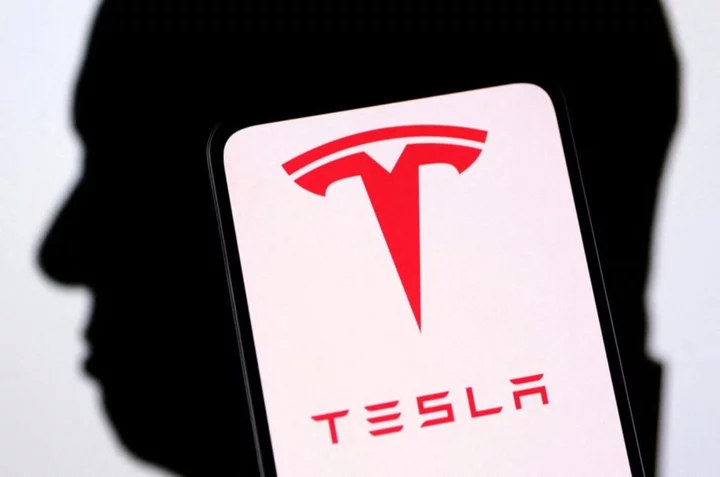
Sanborn promotes Morgen Healy to General Manager of the AppGeo Division
COLORADO SPRINGS, Colo.--(BUSINESS WIRE)--Jul 25, 2023--
2023-07-25 16:20

Jeremy Renner subject to sick viral death hoax
A twisted rumour spread across social media on Friday (23 June) that said Marvel actor Jeremy Renner had passed away from a "freak escalator accident." He has not. It is simply yet another celebrity death hoax. The image was originally shared on Twitter with a fake headline that read: "Jeremy Renner, actor, passes away at 52 from freak escalator accident." The fake article is credited to The Guardian's deputy culture editor Sian Cain but appears to be a doctored screenshot from an article written back in March, as the two used the same image of the star. The original article covered Renner's snowplough accident that occurred in January. The rumour seems to have started from user @weedhitter, whose original tweet has over 1 million views, according to Twitter. The hashtag #ripjeremyrenner soon began trending on Twitter as a result of the fake headline, which later featured a community note letting users know that the Hawkeye actor was still alive. Sign up to our free Indy100 weekly newsletter Whilst the hashtag was trending it seemed that most were in on the hoax, rather than spreading misinformation: However, some didn't appreciate the rumour: Have your say in our news democracy. Click the upvote icon at the top of the page to help raise this article through the indy100 rankings.
2023-06-24 20:51

When Can I Pre-Load Final Fantasy 16?
Players can pre-load Final Fantasy 16 on June 19, three days before the game releases.
2023-06-16 06:45

itel to Unveil Flagship Smartphone S23+: A Fusion of Curved Screen Elegance and Exceptional Performance
SHENZHEN, China--(BUSINESS WIRE)--Sep 17, 2023--
2023-09-18 10:20

Canada's Wildfires Expose the Climate Change 'Spiral of Silence'
What should you do when the air outside contains dangerous levels of pollution? Stay indoors if you can.
2023-06-10 19:18

Apple's My Photo Stream Service to Shut Down This July
Apple’s “My Photo Stream” is set to shut down on July 26, 2023, Apple announced
2023-05-29 02:23

MrBeast slams copycats and regrets sharing his YouTube strategies online, fans say 'your ego has gotten way out of control'
MrBeast said, ‘I thought people would use the knowledge to innovate and be inspired, but tons just copy exactly what I do and don’t change anything’
2023-06-21 14:58

The best dating apps of 2023: A guide to finding love, a hookup, or something in between
The success rate of throwing likes to somebody cute on Instagram definitely isn't zero. And
2023-09-21 17:59

What you need to know about a glass cliff and why it could put Twitter's new CEO in danger
Less than two months into his $44 billion purchase of Twitter, Elon Musk declared that whoever took over as the company’s CEO “must like pain a lot.”
2023-05-16 01:52

Warzone Season 4 Reloaded Roadmap: The Boys, Vondel BR, MX Guardian and More
Warzone Season 4 Reloaded roadmap information, release date, The Boys Operator Bundles, new weapons, maps and more.
2023-07-11 05:24

Travelshift Secures $10 Million USD Capital Raise
REYKJAVIK, Iceland--(BUSINESS WIRE)--Aug 29, 2023--
2023-08-29 20:27

Fortnite Chapter 4 Season 3 Battle Pass Skins Revealed
Epic Games revealed four new Battle Pass skins coming to Fortnite Chapter 4 Season 3 named Era, Trace, Rian, and Lorenzo.
2023-06-07 01:59
You Might Like...

Megan Fox 'had fun' voicing Nitara in Mortal Kombat 1

Calculate your monthly student loan bill under Biden's SAVE plan

Elon Musk says Tesla not immune to tough economy that he foresees

AI Researcher Who Helped Write Landmark Paper Is Leaving Google

Apple GPT: Tech giant reportedly working on a ChatGPT, generative AI competitor

Fieldpiece Instruments and SkillsUSA Announce First Round of Award Recipients for the 2023 #MasteroftheTrade Scholarship

Google’s AI Chatbot Is Trained by Humans Who Say They’re Overworked, Underpaid and Frustrated

Presenting the 2023 PlayStation Holiday Gift Guide
